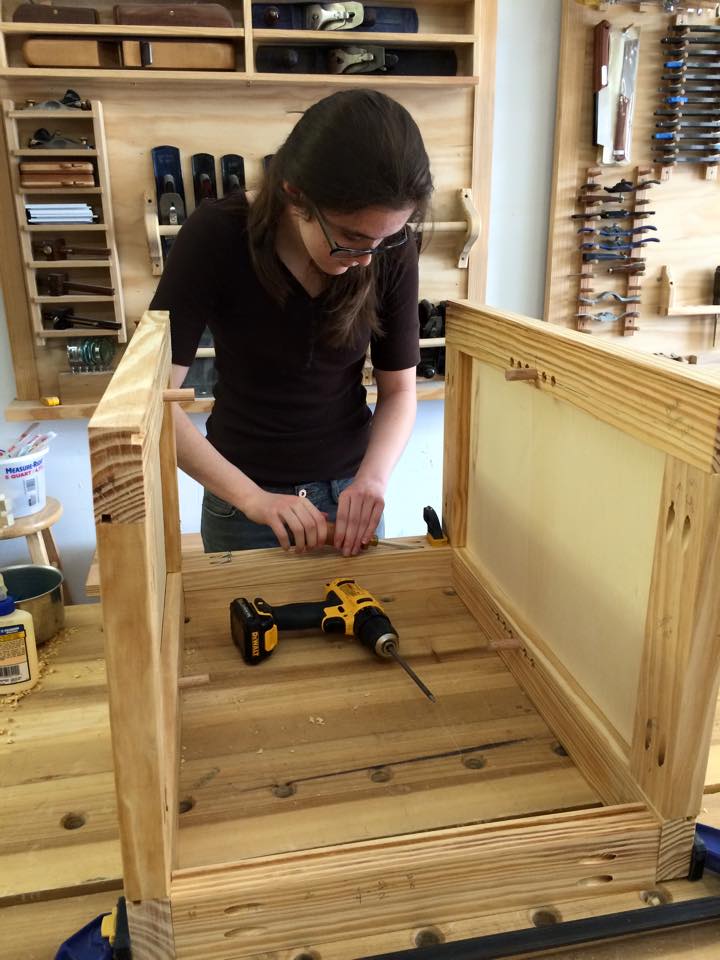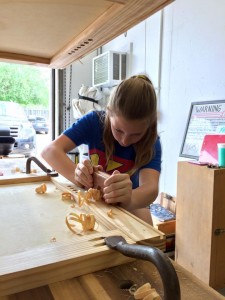Letting Down the Next Generation of Woodworkers
*** previously published on Popular Woodworking's Blog ***
 I’m a big fan of Mike Rowe, the “Dirty Jobs” guy. I say that having only seen a few episodes of that show. I came to know him from his Ted Talks, online interviews and his address to Congress. I think the message he preaches about hard work, safety, life in general make sense. His foundation supporting skilled trades is making a concerted effort to pick up the slack in our education system. His work and message seems to be the distilled opinion of the general public about trade education in our public school system, and I want to point out something that’s bugged me for quite a while because it’s letting down the next generation of woodworkers.
I’m a big fan of Mike Rowe, the “Dirty Jobs” guy. I say that having only seen a few episodes of that show. I came to know him from his Ted Talks, online interviews and his address to Congress. I think the message he preaches about hard work, safety, life in general make sense. His foundation supporting skilled trades is making a concerted effort to pick up the slack in our education system. His work and message seems to be the distilled opinion of the general public about trade education in our public school system, and I want to point out something that’s bugged me for quite a while because it’s letting down the next generation of woodworkers.
I spent many years teaching in what is considered one of the better public school districts in Texas. My certification was Technology Applications, which meant I taught mainly computer classes such as business programs, digital media, web mastering, computer science and the like. I was asked to and did get “Tech Ed” certified so if needed I could step in and teach some shop classes. (The ridiculousness of that certification test is a whole blog post unto itself). But it was unlikely that’d ever be my main teaching focus because of the five large high schools in the district, there was really only one decent woodworking program.
The only reason that single program still existed was because of the teacher, a 30+ year veteran. He was a brilliant carpentry instructor and the district promoted the fact that his kids could go straight to a jobsite. Personally, he was proud his kids would be able to fix everyday things for the rest of their lives. Even though he had a full complement of industrial power tools that’d fit right in at a cabinet shop, most of the work was about reading blue prints, zoning and building codes, building walls, basic plumbing and wiring, etc. When he retired, the program was eliminated in favor of a more computer-based education.
This is a common situation. People have been lamenting the disappearance of shop classes in our public school system all across the country for decades and it’s our own damn fault because of how we’ve been marketing this type of education for generations. And what’s strange to me is it’s so radically different than every other activity we push kids toward during their development years.
 Think about all the elective classes offered during your school years or activities toward which your parents guided you. How many of us started musical instrument classes as a kid? Our parents led us in that direction so we’d develop our mathematical thinking capabilities, be able to better appreciate and enjoy the art form, make friends, plus maybe find an activity we’d enjoy for a lifetime. When you first signed up for orchestra or band or were given a keyboard from Sears, do you really think in the back of their minds your parents were thinking that you could get a job with this skill?
Think about all the elective classes offered during your school years or activities toward which your parents guided you. How many of us started musical instrument classes as a kid? Our parents led us in that direction so we’d develop our mathematical thinking capabilities, be able to better appreciate and enjoy the art form, make friends, plus maybe find an activity we’d enjoy for a lifetime. When you first signed up for orchestra or band or were given a keyboard from Sears, do you really think in the back of their minds your parents were thinking that you could get a job with this skill?
When we take kids to art classes it seems most parents are motivated by expanding the creative side of their kids development so they’ll be better problem solvers and communicators while having fun and making friends. Turning a kid into a mural painter probably isn’t the plan.
With the exception of football (I live in Texas), I doubt many parents think their kids are going pro when they sign up for a team sport. Development of teamwork, communication skills, competitive aptitude, work ethic and a respect for healthy living are more likely the motivation.
But when a child reaches 8th or 9th grade, that’s when shop classes start being offered – not as an exploration of creativity, but of job/career possibilities. Because there are jobs that need filling.
Recently I overheard a very good guidance counselor talking to a kid about her course selections for the upcoming school year. This girl was discussing taking orchestra and the counselor was asking things like, “Oh, you like music?” When the discussion turned to woodshop, the discussion turned to becoming an architect or builder. For me, this illustrates our society’s mentality towards the crafts in school.
Why is it that craft is so career focused while every other subject area taught in our public school system is more generalized or inquisitive in nature? Do we really expect every math student to progress to become mathematicians or is it knowledge, thought processes and basic life skills that are learned? Sure those who show interest may progress to work for MIT, but they’re outliers. The same can be said for the other core curriculum subjects – as well as electives and sports.
So at a the time in life when we have to most opportunities to learn, develop, explore and enjoy subjects, we limit the availability of the crafts to those who self-select them as a career path. We’re marketing to the outliers. By doing so we also limit the development of ancillary benefits of learning crafts.
That’s where we are letting our kids down the most – and thus the next generation of woodworkers.
If we were to shift our focus from career orientation to ancillary skill development then I believe two big things will happen: The general populous will see greater value in the subject matter thus enrollment in craft-centered classes will balloon; and because more people are introduced to the subject, we’ll find more people choosing it as a career path.
Here are just some of the ancillary benefits I see for woodworking:
- Technology Skills. In a world where 3D-modeling rules, why aren’t we encouraging woodworking to develop 3D visualization skills at the very time a kid’s brain is molding higher cognitive skills? Let them carve out a bird from a block. Build a chair from a bunch of sticks. See the relations of 2D drawings to 3D reality. Seating kids at a computer to learn CAD teaches a skill that will likely be outdated and demoted by the time they reach the workforce. Better to develop a brain that can think like the types of programs they will use; the computer skills can be picked up later if needed.
- Focus development. Woodworking is not a fast paced, wham-bam process. How many activities in a kid’s life have that attribute today? Letting a kid express artistic creativity by carving a single panel of a chest, maybe a half-hour to hour at a time of intense focus, can help develop an attribute that isn’t practiced much in our modern lives.
- Emotional Outlet. The type of focus woodworking demands allows the mind to wander, to think through things, to slow down and reveal new tangents, to examine beliefs and formalize character. Basically it’s personal thinking time. A student’s role model could even plant subjects for students to contemplate. “Actions vs Intent”, “Ideals vs Reality”, “Service vs Production”, etc.
- Communication Skills. From designer, to builder, to finisher, to sales, modern woodworking is the model of modern communication. By combining electronic, oral, visual, print and abstract communication, students get practice in maximizing communication efficiency.
- Relationship Skills. While it probably wouldn’t be prudent to promote to a high school crowd, woodworkers make the best lovers. (Side Note: We need to encourage more women into the craft!). There are lots of activities that develop hand control, strength, dexterity and endurance … but all at the same time? A woodworker spends hours exercising and developing strength, feel and control in their hands, plus a mentality to appreciate curves and textures, and is willing to spend hours manipulating them to make them their best. These are trasferrable skills…if perhaps a later in life.
So what do you think? What are more benefits of woodworking education for young folks?
